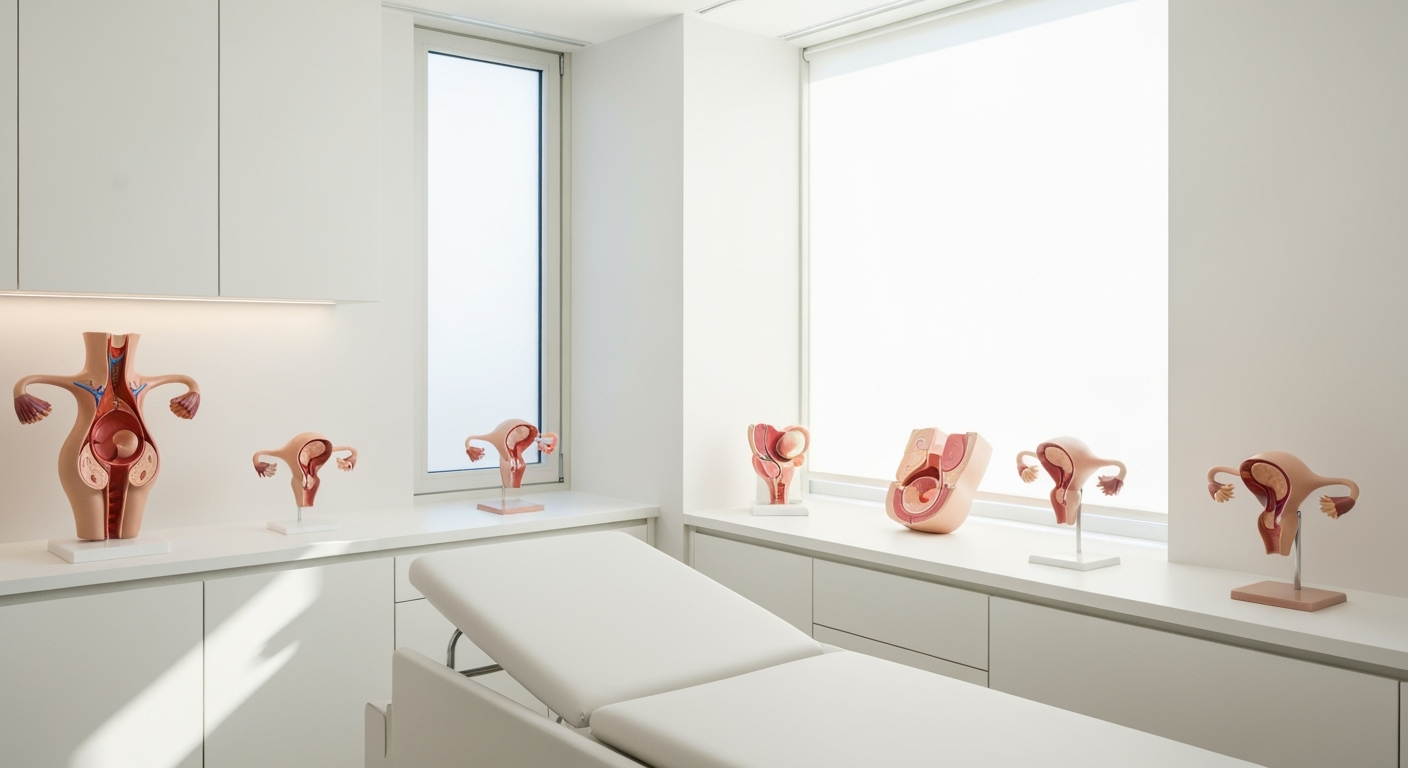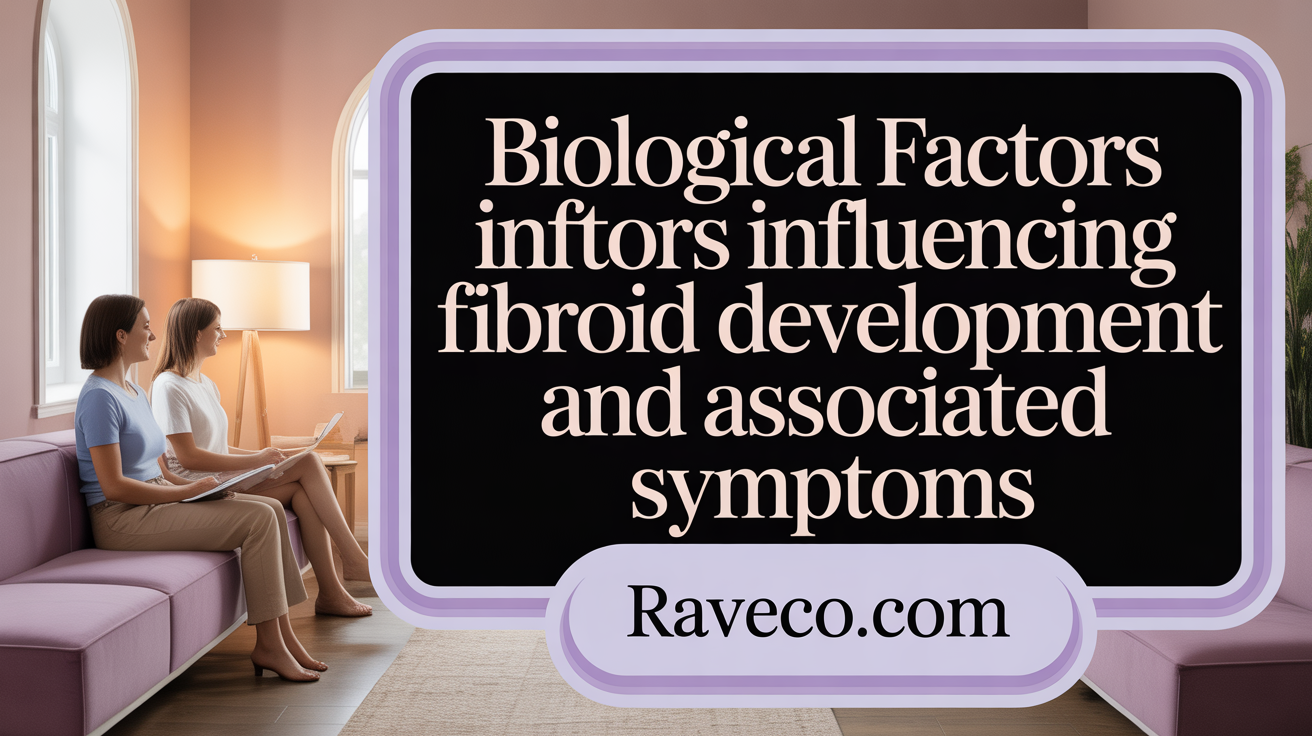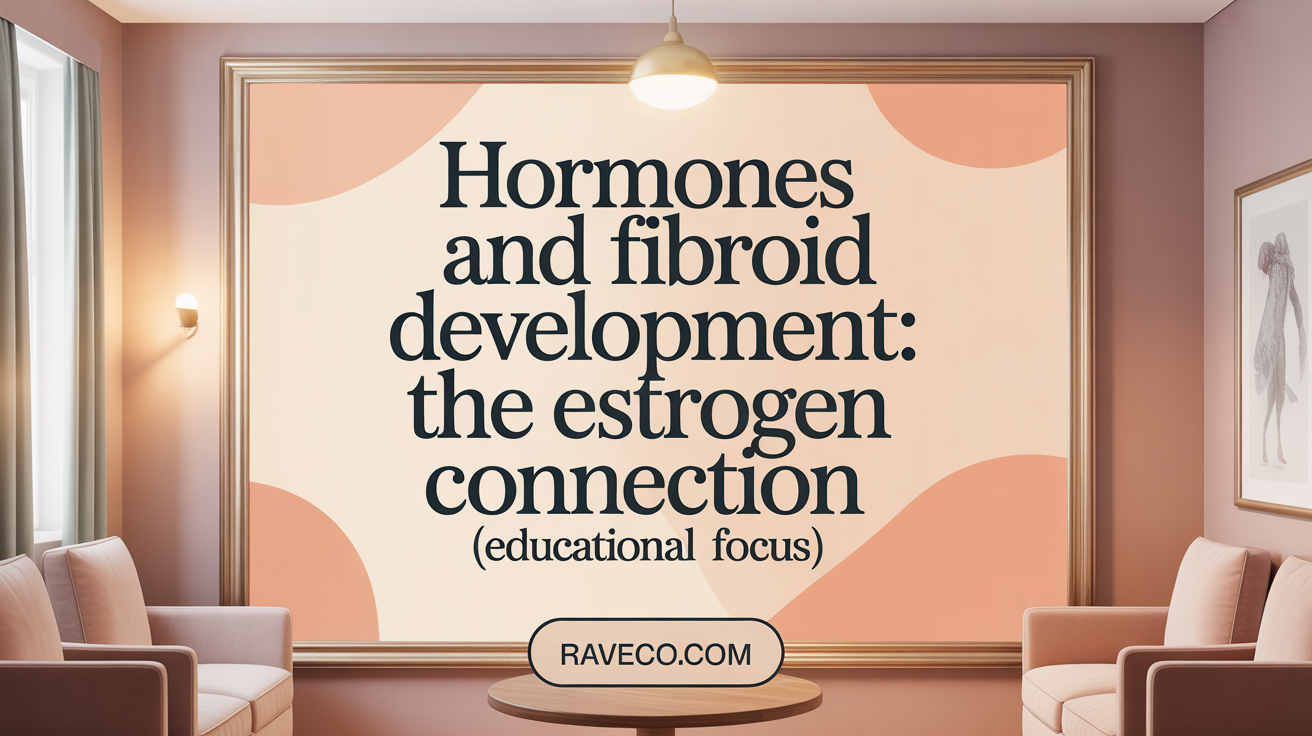Recognizing the Right Time to Address Female Infertility: Key Indicators and Expert Care in Queens

Unraveling the Relationship Between Fibroid Growth and Menstrual Health
Uterine fibroids are benign tumors affecting a significant portion of women during their reproductive years. While many fibroids remain asymptomatic, a substantial number cause heavy menstrual bleeding (HMB), profoundly impacting women's health and quality of life. This article explores the biological mechanisms, clinical manifestations, and management options related to the connection between fibroid growth and heavy bleeding, providing insights into diagnosis, treatment, and complications.
Types and Locations of Fibroids: Impact on Bleeding Patterns

What are different fibroid types?
Fibroids are classified based on their position within the uterus. The main types include intramural (within the uterine wall), submucosal (projecting into the uterine cavity), and subserosal (on the outer surface of the uterus). Each type has distinct implications for symptoms, especially bleeding patterns.
Which fibroid type is most likely to cause irregular bleeding?
Submucosal fibroids are most prone to cause irregular and heavy menstrual bleeding. Because they grow into the uterine cavity and disturb the endometrial lining, they interfere directly with the process of shedding blood during menstruation. This abnormal growth often results in prolonged, unpredictable bleeding episodes, and they are frequently symptomatic even when small.
How does fibroid location influence bleeding?
The location of a fibroid affects how it influences menstrual bleeding. Submucosal fibroids tend to cause the most bleeding irregularities due to their proximity to the uterine lining. Conversely, intramural fibroids, located within the muscular wall, can also cause heavy bleeding but are more often associated with bulk-related symptoms such as pelvic pressure.
Influence on symptoms based on location
| Fibroid Type | Typical Bleeding Pattern | Symptom Characteristics | Impact on Fertility |
|---|---|---|---|
| Submucosal | Heavy, irregular, prolonged | Bleeding between periods, clotting, anemia | High risk of infertility |
| Intramural | Heavy or prolonged | Pelvic pain, pressure, potential bleeding variations | Variable |
| Subserosal | Usually asymptomatic for bleeding | Usually causes pressure symptoms, not bleeding | Less impact |
Why do irregular and heavy bleeding happen?
Different theories suggest that abnormal vasculature surrounding fibroids, especially with irregular blood vessel architecture or rupture in structures like the pseudocapsule, contribute directly to bleeding. The rich and often fragile blood supply over fibroids can lead to vessel rupture, further exacerbating bleeding episodes.
This understanding underscores the importance of fibroid type and location when evaluating bleeding symptoms and guides treatment options tailored to specific fibroid characteristics.
The Biological Mechanisms Behind Fibroid Growth and Bleeding

Do fibroids cause bleeding as they grow?
Fibroids can indeed lead to abnormal bleeding, especially as they increase in size. Larger fibroids, particularly those located inside the uterine cavity or on its inner surface (submucosal fibroids), can disrupt the normal process of uterine lining shedding. This interference often results in heavier, extended menstrual periods, or bleeding that occurs between periods. The extent of bleeding depends on multiple factors, including the size, number, and location of the fibroids.
Genetics of fibroids
The development of fibroids is closely linked to genetic mutations. Several somatic driver mutations have been identified in fibroids, including alterations in genes such as MED12, HMGA2, FH, and COL4A5-A6. These mutations drive abnormal cell growth and influence the biological behavior of the tumors. For example, mutations in MED12, a gene involved in transcription regulation, are found in up to 70% of fibroids, which enhances proliferation.
Angiogenic factors
Genetic mutations stimulate the production of growth and angiogenic factors like insulin-like growth factors IGF-1 and IGF-2. These promote the formation of new blood vessels essential for fibroid growth. The increased vascularization supports rapid tumor expansion but also contributes to the high blood supply and fragile vessels overlying fibroids, which can lead to bleeding.
Vascular abnormalities
Fibroids are surrounded by irregular, highly abnormal vasculature. These abnormal blood vessels may rupture easily, adding to abnormal bleeding. The formation of a pseudocapsule—a vascular structure that encapsulates intramural fibroids—may explain some bleeding episodes. Vascular theories suggest that vessel abnormalities, enlarged venous lakes, and abnormal vessel architecture contribute significantly to heavy menstrual bleeding in women with fibroids.
Role of extracellular matrix (ECM)
Fibroids are characterized by excessive ECM production, including collagen and fibronectin, which make the tumor stiff and enlarge it. ECM acts as a reservoir for growth factors like transforming growth factor β (TGF-β), promoting further proliferation and matrix deposition, creating a feedback loop that fuels fibroid growth and stiffness. Increased ECM contributes to mechanical changes in the myometrium and affects uterine contractility, which can impair blood vessel constriction during menstruation.
Mechanotransduction effects
Fibroids induce mechanotransduction—changes in cellular signaling resulting from mechanical stimuli—leading to decreased uterine contractility and increased tissue rigidity. This altered mechanical environment hampers effective control of blood flow during menstruation, resulting in heavier bleeding. These mechanical changes also influence gene expression, affecting cellular and vascular architecture, and contribute to the symptom profile of fibroids.
| Aspect | Biological Influence | Impact on Bleeding | Additional Details |
|---|---|---|---|
| Genetics | Mutations in MED12, HMGA2 | Promotes abnormal cell and vessel growth | Underpins tumor development |
| Angiogenic factors | IGF-1, IGF-2 | Stimulate new blood vessel formation | Support fibroid expansion |
| Vascular abnormalities | Irregular vessels, pseudocapsule | Increased rupture risk, bleeding | Cause abnormal vessel architecture |
| ECM Role | Excess collagen, fibronectin | Structural stiffness, vessel support | Feeds growth factors |
| Mechanotransduction | Mechanical signaling | Reduced contractility, increased rigidity | Contributes to bleeding and symptom severity |
Understanding how these factors interact helps explain why fibroids can cause heavy bleeding and why targeting specific mechanisms may improve treatment options for women suffering from this condition.
How Fibroids Cause Heavy Bleeding and Clot Formation

Why do fibroids cause heavy bleeding and clots?
Fibroids contribute to heavy menstrual bleeding and clot formation mainly by affecting the blood vessels and the uterine lining. These tumors disrupt normal vascular structures, making the blood vessels surrounding fibroids fragile and irregular, which can lead to vessel rupture and bleeding.
The formation of a pseudocapsule—a vascular structure that surrounds some fibroids—may also cause vessel rupture, increasing bleeding during periods. This abnormal vasculature, influenced by factors like VEGF (vascular endothelial growth factor) and IGF (insulin-like growth factor), promotes the development of new blood vessels that are often disorganized and prone to bleeding.
Additionally, fibroids can enlarge or distort the uterine lining, especially when they are submucosal (located in the uterine cavity). This increased surface area and structural abnormality result in more bleeding during menstruation.
Hormonal influences play a role by stimulating blood vessel growth and uterine lining buildup. Elevated levels of prostaglandins further promote uterine contractions and bleeding, along with platelet aggregation in clots.
The combination of these vascular abnormalities, increased angiogenic activity, and disruption of the uterine lining greatly enhances bleeding risk, often resulting in the passage of blood clots during menstruation.
Hormonal Influences on Fibroid Development and Bleeding

What role do hormones such as estrogen play in fibroid development and bleeding?
Hormones like estrogen and progesterone are fundamental in the growth and development of uterine fibroids. Estrogen, in particular, stimulates cell proliferation in fibroid tissue by binding to specific estrogen receptors that are more abundant in fibroids than in normal uterine tissue. This hormone encourages angiogenesis, or the formation of new blood vessels, which supplies nutrients and oxygen to the growing fibroid.
The increased vascular network around fibroids, driven by estrogen, can often be fragile and irregular, contributing to heavy menstrual bleeding. Elevated estrogen levels during reproductive years promote fibroid enlargement, while hormonal fluctuations during the menstrual cycle can cause episodic increases in fibroid size.
Progesterone also influences fibroid growth, often working in tandem with estrogen. When there is an imbalance—particularly an excess of estrogen relative to progesterone—fibroids tend to grow more rapidly. During pregnancy, high hormone levels can cause fibroids to enlarge, whereas after menopause, the decline in estrogen typically results in shrinkage of fibroids.
How does estrogen receptor sensitivity affect fibroid growth?
Fibroid cells express more estrogen receptors and are more responsive to estrogen stimulation than normal uterine tissue. This heightened sensitivity makes fibroids particularly susceptible to the hormonal environment, allowing even normal fluctuations in estrogen levels to promote growth.
Receptor sensitivity can be influenced by genetic factors and inflammatory states, which might further enhance fibroid responsiveness to estrogen. Treatments that lower estrogen levels or block estrogen receptors, such as GnRH agonists, are often effective in reducing fibroid size and associated symptoms.
How do hormonal fluctuations influence fibroid size?
Throughout the menstrual cycle, estrogen levels peak during the follicular phase, promoting fibroid growth. Conversely, during the luteal phase, progesterone dominates, which can also encourage fibroid enlargement. Such cyclical changes may contribute to fluctuating symptoms like bleeding and pain.
Over the lifespan, estrogen levels increase during reproductive years and decrease after menopause. This decline often results in the shrinkage of fibroids and a reduction in symptoms, which explains why many women experience symptom improvement post-menopause.
What about postmenopausal changes?
Since estrogen levels drop significantly after menopause, fibroids tend to decrease in size and become less symptomatic. This hormonal change can be beneficial in managing fibroid-related issues without invasive treatments.
How do hormones regulate angiogenic factors in fibroids?
Hormonal stimulation upregulates the expression of angiogenic factors like IGF-1 and IGF-2, which promote blood vessel formation within fibroids. This increased vascularization supports fibroid growth and contributes to the irregular and fragile blood vessels observed around these tumors.
The manipulation of hormonal pathways and understanding their regulatory effects on blood vessel growth offer potential targets for medical therapies aimed at reducing fibroid size and mitigating heavy bleeding.
Clinical Symptoms and Consequences of Enlarged Fibroids

What happens when fibroids grow larger?
Larger fibroids can significantly impact the structure and function of the uterus. They often cause noticeable swelling or a sensation of fullness in the pelvic area, sometimes mimicking the size of a pregnancy.
One of the most common symptoms associated with large fibroids is heavy menstrual bleeding, which can lead to anemia, causing fatigue, dizziness, and weakness.
Pelvic pain or pressure is frequently reported, especially as fibroids enlarge and stretch surrounding tissues. This pressure can also affect nearby organs, leading to urinary symptoms such as increased frequency of urination or a feeling of urgency.
Large fibroids may obstruct the bowel, resulting in constipation or discomfort during bowel movements.
In addition to physical symptoms, sizeable fibroids can interfere with fertility and pregnancy. They may obstruct the uterine cavity or interfere with embryo implantation, increasing the risk of miscarriage or preterm delivery.
While many fibroids do not grow or grow slowly, significant enlargement requires medical evaluation. Excessive growth or symptoms caused by large fibroids often necessitate treatment such as medication or surgical removal to relieve symptoms and prevent complications.
Symptoms of large fibroids include:
- Heavy and prolonged menstrual bleeding
- Pelvic pain and pressure
- Frequent urination or urinary retention
- Bowel issues like constipation
- Discomfort during sex
- Swelling or a feeling of fullness resembling pregnancy
These symptoms profoundly affect daily activities and overall quality of life, highlighting the importance of monitoring fibroid growth and seeking medical advice when symptoms develop or worsen.
Diagnosis and Management of Heavy Bleeding Due to Fibroids
How are heavy bleeding and fibroids diagnosed and managed?
Diagnosing heavy menstrual bleeding caused by fibroids involves a thorough clinical evaluation supported by various imaging techniques. An ultrasound is typically the first step, providing clear visualization of fibroid size, location, and number. In some cases, MRI may be used for more detailed assessment, especially when planning surgical or minimally invasive procedures. Hysteroscopy allows direct visualization of the uterine cavity and can assist in diagnosing submucosal fibroids or polyps contributing to abnormal bleeding.
Blood tests are also essential to check for anemia, a common consequence of heavy bleeding. Hemoglobin and hematocrit levels help determine if blood transfusion or iron supplementation might be necessary.
Management strategies are tailored based on the severity of symptoms, the size and location of fibroids, patient age, fertility considerations, and overall health. For mild cases, watchful waiting with regular monitoring may be appropriate.
Medical treatments aim to control bleeding and reduce fibroid size. These include hormonal therapies such as birth control pills, GnRH agonists like Lupron, and non-hormonal options like NSAIDs for pain relief and tranexamic acid to reduce bleeding.
Minimally invasive procedures offer alternatives to surgery. Uterine artery embolization (UAE) cuts off the blood supply to fibroids, shrinking them and easing symptoms. Focused ultrasound (FUS) is another noninvasive option that uses high-frequency sound waves to destroy fibroid tissue.
In cases where fibroids cause significant symptoms or if fertility preservation is desired, surgical options like myomectomy are considered. This procedure removes fibroids while leaving the uterus intact. Hysterectomy, the removal of the entire uterus, remains a definitive treatment, especially in women who no longer wish to conceive.
Overall, choosing the right treatment involves evaluating the patient's health profile, wishes, and fibroid characteristics, emphasizing individualized care to achieve the best outcomes.
Health Implications and Complications Associated with Fibroid-Related Bleeding

What are the health implications and potential complications related to fibroid-associated heavy bleeding?
Heavy menstrual bleeding caused by fibroids can lead to significant health problems, primarily anemia. This condition occurs when chronic blood loss depletes iron stores, resulting in fatigue, dizziness, weakness, and decreased overall energy, which can severely impair daily functioning.
Fibroid-related bleeding is often due to fragile blood vessels overlying the fibroids, increased vascularity, and hormonal effects that promote excessive uterine lining buildup. These factors contribute to prolonged and heavy bleeding episodes, sometimes lasting more than a week and involving large blood clots.
In addition to blood loss issues, large or strategically situated fibroids can exert pressure on adjacent pelvic organs. This pressure can cause urinary problems, like increased urinary frequency or retention, and bowel issues such as constipation. Over time, this increased pressure may impact the quality of life significantly.
Fertility and pregnancy outcomes may also be affected. Certain fibroids, especially those that distort the uterine cavity or interfere with implantation, can increase the risk of miscarriage, preterm birth, or obstructed labor.
If left untreated, severe bleeding and other complications could compromise health, leading to life-threatening situations like significant blood loss and severe anemia. Early diagnosis and management, including medical or surgical interventions, are essential to prevent these outcomes and ensure better health and quality of life for women with fibroids.
Research Insights on Fibroid Biology and Symptomatology
What genetic mutations drive fibroid growth?
Fibroid growth is linked to mutations in specific genes such as MED12, HMGA2, FH, and COL4A5-A6. These genetic changes promote abnormal cell proliferation, leading to the development of these benign tumors.
How does fibroid growth relate to angiogenic factors?
Mutations in fibroid cells increase the production of factors like IGF-1 and IGF-2, which stimulate blood vessel formation around the tumor. This abnormal blood supply supports fibroid growth and may contribute to bleeding issues.
What role does the extracellular matrix and growth factors play?
Fibroids produce an excess of extracellular matrix (ECM), which stiffens the tissue and enlarges the tumor. ECM acts as a reservoir for growth factors such as TGF-β, fueling further fibroid growth.
How does mechanotransduction affect uterine contractility?
The expansion of fibroids changes the mechanical forces within the uterus. This results in decreased contractility, increased rigidity, and disrupted menstrual processes, which can lead to heavier bleeding.
What impact do microRNAs have on vascular changes?
Altered microRNA expression in fibroids influences pathways like TGF-β and vascular development. These changes affect endometrial blood vessel formation, contributing to abnormal bleeding and fertility problems.
| Aspect | Effect | Implication |
|---|---|---|
| Genetic mutations | Activation of growth-promoting pathways | Tumor formation and growth |
| Angiogenic factors | Increased blood vessel formation | Supports fibroid size, contributes to bleeding |
| ECM & growth factors | Tissue stiffening, reservoir for growth | Tumor expansion and uterine dysfunction |
| Mechanical forces | Reduced uterine contractions, increased rigidity | Heavier bleeding and pressure symptoms |
| MicroRNA expression | Altered vessel formation and gene regulation | Abnormal endometrial environment and bleeding |
Current research continues to reveal the complex biological pathways that drive fibroid growth and symptoms, emphasizing the importance of genetic, vascular, and mechanical factors in their management.
The Influence of Stress and Racial Disparities on Fibroid Growth and Symptoms
How does stress act as a biochemical factor in fibroid growth?
Stress triggers the release of hormones such as cortisol, which can influence the balance of other hormones like estrogen and progesterone. Elevated levels of these hormones are linked directly to fibroid growth, as they stimulate the proliferation of uterine muscle cells. Recent research suggests that stress not only affects hormone levels but may also lead to changes at the cellular level, including alterations in microRNA expression, which regulate gene activity involved in tumor formation.
What is the connection between microRNA and fibroid development?
MicroRNAs are small molecules that control gene expression and are crucial in cell growth and differentiation. A recent study supported by the NIH found that women with high stress scores had increased levels of specific microRNAs in their uterine muscle tissue. These microRNAs can promote tumor growth by regulating pathways related to cell proliferation and apoptosis, thus potentially accelerating fibroid development and worsening symptoms.
Why do Black women tend to experience more severe fibroid symptoms?
Research indicates that Black women are disproportionately affected by fibroids, often developing larger and more numerous tumors. They also tend to experience more painful and heavier bleeding. Part of this disparity is linked to higher levels of stress due to systemic factors like socioeconomic status and racial discrimination, which may compound hormonal and genetic influences, leading to more aggressive fibroid growth.
Are there disparities in diagnosis and treatment?
Generic data shows that Black women often receive later diagnoses and less aggressive treatment compared to White women. While hysterectomy remains a common surgical option, recent shifts show that White women are increasingly opting for early surgical interventions, whereas Black women are less likely to receive timely or effective care. These disparities highlight the importance of equitable healthcare, including culturally sensitive diagnosis and management strategies.
Why is comprehensive care and support vital for women with fibroids?
Closing the gap in fibroid care involves addressing biological, social, and psychological factors. Managing stress through lifestyle changes, social support, and mental health resources can help mitigate hormonal and cellular effects. Further, tailored treatment options that consider racial disparities can improve outcomes, reduce the severity of symptoms, and promote overall well-being for women battling fibroids.
| Aspect | Impact | Considerations |
|---|---|---|
| Stress | Promotes hormone imbalance & microRNA changes | Stress reduction programs can help mitigate growth |
| MicroRNA | Regulates tumor growth pathways | Monitoring microRNA levels may inform treatment |
| Racial Disparities | Leads to differences in disease severity & treatment | Healthcare equity is essential |
| Treatment | Varies by race & socioeconomic status | Culturally competent, personalized care |
Integrating Knowledge for Better Management of Fibroid-Related Heavy Bleeding
Uterine fibroids are common benign tumors that can lead to significant heavy menstrual bleeding through a combination of vascular abnormalities, hormonal influences, and mechanical interference with uterine function. Understanding the types of fibroids, particularly submucosal ones, and their biological behavior helps explain the bleeding and associated symptoms many women face. Diagnosis guided by imaging and blood tests allows for tailored management strategies ranging from medication to surgery, aiming to alleviate symptoms and preserve fertility where desired. A deeper appreciation of genetic, hormonal, and environmental factors, alongside recognition of racial and psychosocial disparities, can enhance patient care and outcomes. Timely intervention is crucial to prevent complications such as anemia and infertility, ensuring women impacted by fibroids receive effective, compassionate treatment.
References
- Uterine Fibroids (Leiomyomata) and Heavy Menstrual Bleeding - PMC
- Uterine Fibroids: Causes, Symptoms & Treatment - Cleveland Clinic
- Why Fibroids Trigger Heavy Bleeding? - Katy Women's Pelvic Health
- Understanding the Impact of Uterine Fibroids on Human ...
- What doctors wish patients knew about uterine fibroids
- Understanding Menorrhagia And Its Link To Uterine Fibroids
- Uterine fibroids - Symptoms and causes - Mayo Clinic
- Fibroids and Heavy Bleeding: Your FAQs - Healthline
- Fibroids / Heavy Bleeding | NWEPS





.png)